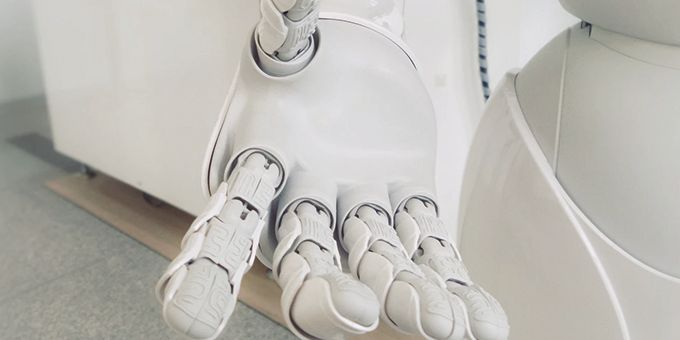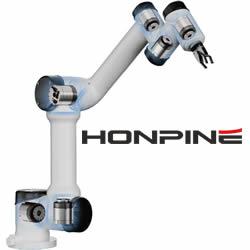For all of the potential that robotics and automation have brought to humanity's table, there are still concerns surrounding liability and robotics that will likely continue for years to come.
 The Future of Robotics and Liability: Who is Responsible?
The Future of Robotics and Liability: Who is Responsible?

Article from | Jori Hamilton
While even a couple of decades ago, the idea that automated robots would be responsible for making huge swathes of everyday life easier for humanity was based almost entirely in the realm of science fiction, today the story is much different. Robotics and automation have advanced considerably in recent years providing us with increased industrial efficiency, huge medical breakthroughs, and have begun to change how humanity moves from one place to another. However, for all of the potential that robotics and automation have brought to humanity’s table, there are still concerns surrounding liability and robotics that will likely continue for years to come.
Industrial Robotics
The use of robotics in industrial applications isn’t by any means a new concept. As far back as World War II, robotics have been used to automate repetitive, labor-intensive tasks in industrial settings allowing for human workers to focus on more complex tasks. Technology has steadily advanced ushering in an age where robotics and automation are now a staple of nearly every industry, making possible the incredibly fast mass production that has, in many ways, allowed humanity to come as far as it has.
While industrial applications of robotics have certainly made lives easier across the world, their use has also sparked a long-standing legal debate. Robotics have increased efficiency immeasurably, but as with any technology that involves heavy, moving machinery, automation in the industrial sector has caused numerous fatalities over the years.
The first fatality occurred in 1979 at a Ford factory in Michigan where the robot’s manufacturer, not Ford themselves, was held liable in court for the accident. Since then, there has existed a legal quagmire around exactly who is liable when these types of accidents occur with all involved parties attempting to shift blame away from themselves.
Robotics In Healthcare
Though there are certainly plenty of laws in the books regarding liability when it comes to accidents involving robots, technological leaps in recent years have muddied the waters further as many current laws do not apply to how robotics are being used today. In the healthcare industry, robotics are making waves for their ability to assist, automate, and augment the activities of healthcare professionals. Robots have been used for everything from the delivery of medications and other sensitive materials to even helping doctors perform surgery remotely.
Surgical robots are increasingly popular in the medical field as they are ideal for performing minimally invasive surgeries. Robots that assist medical professionals in performing surgery allow for increases in precision, dexterity, and flexibility which can greatly improve patient outcomes when difficult and complex surgeries are required. While surgical robots have been revolutionary in providing care to patients across the globe regardless of proximity to surgical specialists, they too have brought to the forefront of the conversation issues regarding liability when it comes to failed surgeries and malpractice suits.
When a surgeon is at fault in a medical malpractice suit, liability is relatively straightforward. If the surgeon themselves makes an error during surgery, be it operating on the wrong part of the body, providing inferior treatment post-surgery, or even leaving behind medical tools inside of a patient’s body then those filing the malpractice suit can expect a payout of variable size depending on their state of residence. However, if it is found that the robot is at fault then liability for the injury falls to the robot’s manufacturer and not the surgeon or hospital where the surgery took place.
Autonomous Vehicles
While we are rapidly approaching an era where fully-autonomous cars will become a reality across the globe, today’s vehicles do not yet have the level of technology required to be considered fully automated. The truth of the matter is that the cars on the road today with semi-autonomous driving capabilities really only assist the driver and still require that they remain attentive behind the wheel to avoid accident and injury. We are quite a way off from everyone having their own personal fully-automated robotic chauffeur, which means that liability when it comes to accidents generally falls on the operators of semi-autonomous vehicles.
For example, in the infamous case out of Tempe, AZ, where a semi-autonomous Uber struck and killed a woman, neither Uber nor Volvo, the vehicle’s manufacturer, were found criminally liable for the fatal incident. Instead, the human operator faces a potential manslaughter charge for their failure to take emergency action to prevent the collision despite receiving no warning from the automated vehicle regarding the presence of a civilian on a bicycle in the road.
However, actual Robotic Driverless Vehicles, or RDVs, are on their way courtesy of companies like Google, BMW, and Mercedes. When these actually fully-automated vehicles do hit the roads en masse, it is likely that liability will shift from the humans riding in these RDVs to the manufacturers of the vehicles themselves as the humans will no longer be necessary for the operation of the vehicle and thus would not be likely to be found at fault for any accidents that do occur.
We live in an exciting era in which robotics have been positioned to affect our daily lives in many different ways. As time moves forward and new laws are put into place liability for injuries may shift, but as of right now the majority of cases involving injury caused by a robot find either the operator or the manufacturer liable. Be careful and conscientious when dealing with robots today because they certainly have the potential to do harm despite the huge amount of good they accomplish.
The content & opinions in this article are the author’s and do not necessarily represent the views of RoboticsTomorrow
Featured Product

